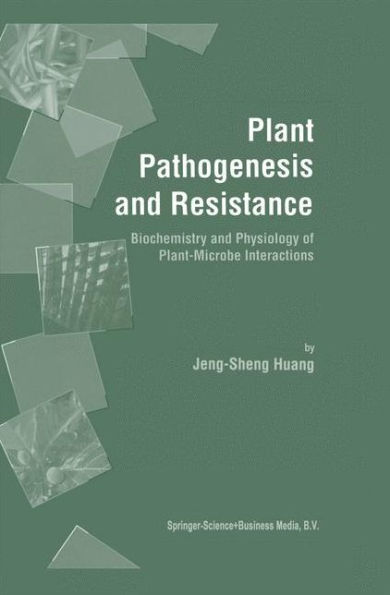Plant Pathogenesis and Resistance: Biochemistry and Physiology of Plant-Microbe Interactions
Each plant-pathogen interaction involves a two-way molecular communication. On one hand, the pathogen perceives signals from the plant, secretes chemical arsenals to establish infection courts, and produces metabolites that disrupt structural integrity, alter cellular function, and circumvent host defenses. On the other hand, the plant senses the signals from the pathogen, reinforces its cell walls, and accumulates phytoalexins and pathogenesis-related proteins in an attempt to defend itself. The production of pathogenicity and virulence factors by the pathogen, the elicitation of defense mechanisms by the plant, and the dynamic interaction of the two are the focal points of this book. The book will be of interest to researchers and advanced undergraduate and graduate students in the areas of plant pathology, plant physiology, and plant biochemistry.
1103784789
Plant Pathogenesis and Resistance: Biochemistry and Physiology of Plant-Microbe Interactions
Each plant-pathogen interaction involves a two-way molecular communication. On one hand, the pathogen perceives signals from the plant, secretes chemical arsenals to establish infection courts, and produces metabolites that disrupt structural integrity, alter cellular function, and circumvent host defenses. On the other hand, the plant senses the signals from the pathogen, reinforces its cell walls, and accumulates phytoalexins and pathogenesis-related proteins in an attempt to defend itself. The production of pathogenicity and virulence factors by the pathogen, the elicitation of defense mechanisms by the plant, and the dynamic interaction of the two are the focal points of this book. The book will be of interest to researchers and advanced undergraduate and graduate students in the areas of plant pathology, plant physiology, and plant biochemistry.
329.99
In Stock
5
1

Plant Pathogenesis and Resistance: Biochemistry and Physiology of Plant-Microbe Interactions
692
Plant Pathogenesis and Resistance: Biochemistry and Physiology of Plant-Microbe Interactions
692
329.99
In Stock

Product Details
| ISBN-13: | 9780792371182 |
|---|---|
| Publisher: | Springer Netherlands |
| Publication date: | 07/31/2001 |
| Edition description: | 2001 |
| Pages: | 692 |
| Product dimensions: | 6.14(w) x 9.21(h) x 0.36(d) |
From the B&N Reads Blog
